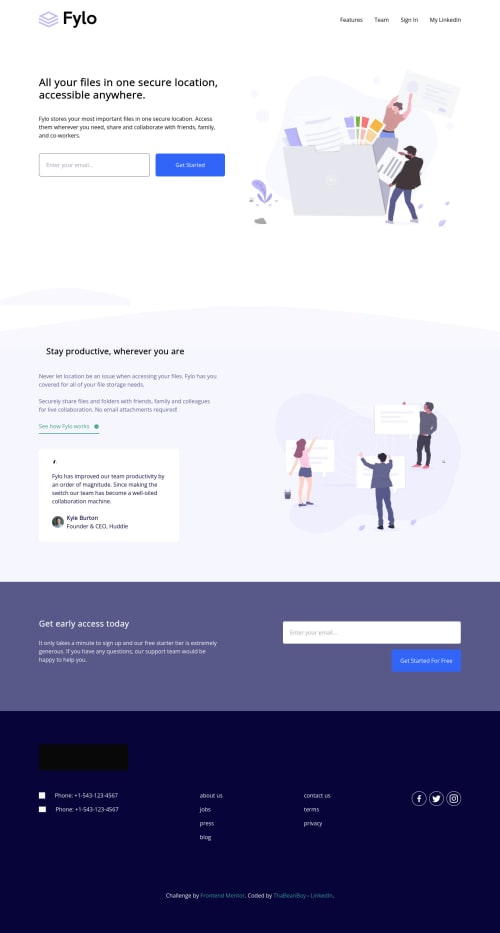Responsive landing page with graph animation using React & Tailwind

Solution retrospective
This is the first time I ever touched Tailwind CSS. The thing I love about it is that I still had control over how I styled my components through utility. Something that I really enjoyed is that I didn't have to constantly jump between JSX & CSS files. This made it feel like I was saving a bit of time during development.
I love how you can configure Tailwind. In this project, colours & fonts were given, which were easily included in the config file. One thing I had to get used to was putting all the breakpoints in the config file.
I was worried about how everything would look if I used tailwind, but while reading through the docs (https://tailwindcss.com/docs/utility-first), my worries were alleviated. Something I also really loved was Automatic class sorting with Prettier.
The last thing I had to adjust to, was learning how to develop in a mobile-first development workflow. It didn't really take time to adjust, especially considering how you can make websites responsive using Tailwind.
Although the current config file has different screens, colours & font-families, what was lacking was proper spacing & font sizes. This could probably be attributed to the fact that I didn't have access to the actual design file, but rather the images of the designs alone. So I had to approximate the sizes. Using opening the design images in Figma helped when trying to determine things, but it's not always accurate.
Please log in to post a comment
Log in with GitHubCommunity feedback
- @AdrianoEscarabote
Hi ThaBeanBoy, how are you? I really liked the result of your project, but I have some tips that I think you will enjoy:
The links must have an aria-label or sr-only text that tells where the link navigates the user. For example: Visit our Facebook. For images, you should set aria-hidden=” true” to be ignored by screen readers and to avoid redundancy and repetition.
<html> element must have a lang attribute [click here](https://dequeuniversity.com/rules/axe/4.3/html-has-lang?application=axeAPI)I noticed that this image is appearing in higher resolutions, you probably didn't notice ahuahuahu
<img data-main-image="" style="opacity: 1;" sizes="(min-width: 375px) 375px, 100vw" decoding="async" loading="lazy" alt="curved background" src="/static/5f0b90e83abae7337bca43e2ee067cbe/c2ffb/bg-curve-mobile.svg" srcset="/static/5f0b90e83abae7337bca43e2ee067cbe/d3757/bg-curve-mobile.svg 94w,/static/5f0b90e83abae7337bca43e2ee067cbe/9b482/bg-curve-mobile.svg 188w,/static/5f0b90e83abae7337bca43e2ee067cbe/c2ffb/bg-curve-mobile.svg 375w">The rest is great!
I hope it helps...
Marked as helpful
Join our Discord community
Join thousands of Frontend Mentor community members taking the challenges, sharing resources, helping each other, and chatting about all things front-end!
Join our Discord